Identifying and building successful partnerships with startups can be a game-changer in today’s competitive business environment. The challenge here? Many organizations still rely on spreadsheets instead of automated, data-driven processes. In this article, we'll show you how to accelerate your startup scouting and systematically identify strategic partnerships.
Every big and successful organization was once a startup and had meager beginnings. They were willing to take risks, innovate and disrupt despite lacking finances and resources. But as they grew, the processes they chose to bring stable growth reduced their ability to execute as they did in the past. Partnerships with startups can be a solution to bring that same enthusiasm back to big organizations and innovate without bounds.
Startup scouting is the process of identifying and evaluating startups that match an organization's strategic goals and requirements. The objective is the discovery of innovative and disruptive startups that offer new technologies, solutions, and business models in a timely manner and with a high success rate. Rather than taking startups as competitors, maintaining a healthy relationship and collaborating with them can give an upper hand for businesses to stay ahead in the competitive market.
The importance of startup partnerships
Partnerships between startups and larger organizations can be a win-win situation for both parties. With the help of startups, big corporates can gain access to new technologies and customer-centric solutions. Startups, on the other hand, have access to higher budgets and greater resources, which allows them to focus better on developing their products or services, and they become more visible in the market, which can attract new customers.
3 ways to identify relevant startups using ITONICS Insights
To stay up-to-date with new market entrants, you can attend networking events or use data from scouting companies and consulting firms. Alternatively, ITONICS can help you discover startups by scanning millions of data points from news articles, patents, and scientific publications while also staying on alert for trends and emerging technologies in the market. ITONICS Insights offers several features that help you to efficiently scan the startup landscape.
1. Use the Search bar to find relevant Signals for specific keywords
To search for startups, you can use the keyword “startup” and other relevant keywords in the Search bar. The search result below shows signals with fintech, startup, and blockchain.
The result shows more than 3,300 signals, which can be overwhelming. To narrow down your search, you can use the Power Search feature, which allows you to create Boolean queries with a lot of options to target your search to any specific area as you desire. Here’s an example of a Power Search query that aims to look for fintech startups that do not use blockchain technology:

To learn more about refining your startup search, read: How to Define the Right Search Criteria in Startup Scouting
2. Refine the Signals Feed with filters
You can make the results more relevant to your needs by opening the ‘Filter’ tab and clicking on the ‘Categories’ dropdown to add categories that are relevant to your needs or remove those that aren’t that helpful for the startup search process.
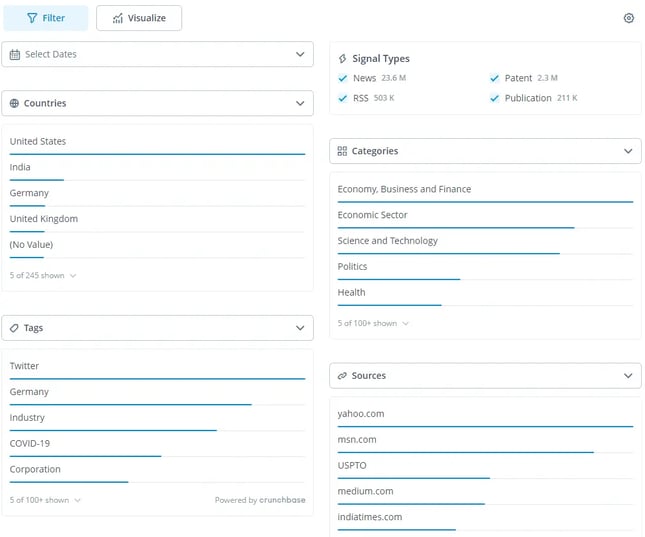
3. Use visualization tools to draw quick inferences
With the ‘Visualize’ tab, you can view startup data with Timeline and World Map visualizations. The Timeline view gives you an overview of the time span of publications related to a specific search. The World Map view shows where the publications were made, which makes your search easier if you only want to scout specific countries. You can click on any region to add it to the search or remove it.
Once the search is refined to your needs, you can start to gather information about startups directly from the article headlines.
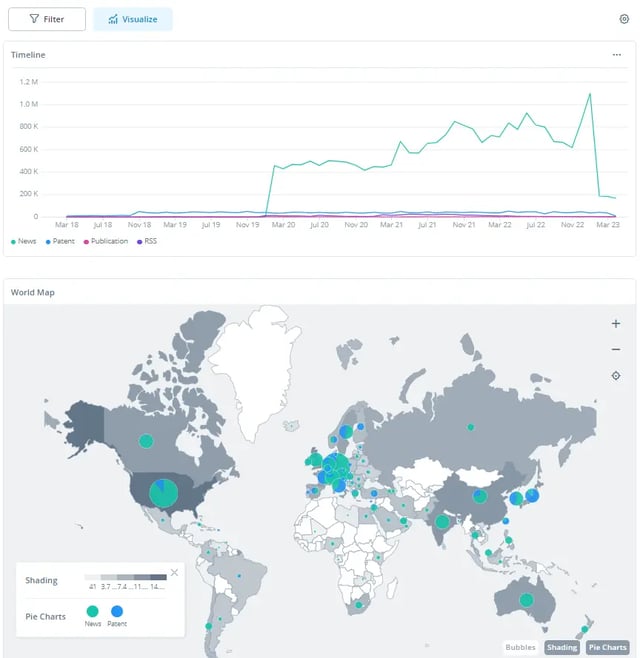
Using ITONICS Radar to explore startup partnerships
ITONICS Radar is a tool that helps you to understand, evaluate, share, connect, discuss, and map trends, technologies, startups, competitors, risks, and other drivers of change on one central platform. This gives teams a focused vision of the future and accelerates the discovery of new opportunities. A startup radar is a visual representation of your startup landscape that allows you to easily monitor and identify the most relevant partners for your business.
Create content
You can easily find interesting signals on relevant startups using ITONICS Insights. You can also manually import existing content you may already have. To identify signals:
- Define your search field and filter down search results:
If you want to build up your radar, for example, with startups in the USA, you can start by narrowing down your search in ITONICS Insights using the filter option. By only selecting the United States as the country, you may have identified Avenues-GT as a potential startup for collaboration or acquisition.
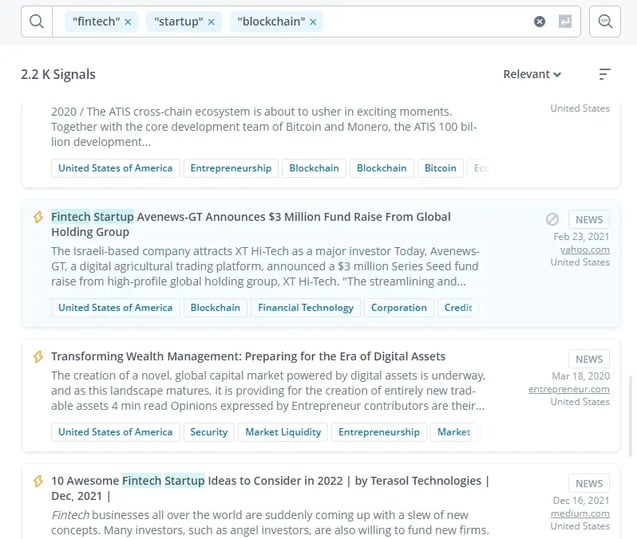
You can gain more insights about the startup by directly searching for it on the Signals page. This gives you highly relevant news solely related to the startup.
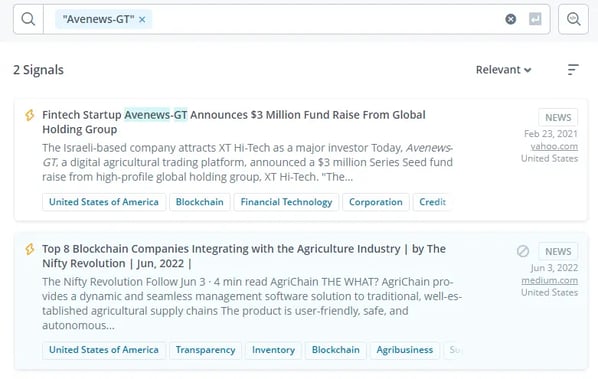
- Create Elements from Signals:
Once you have identified the most interesting startups, you can click on the ‘Create’ button to include them as an Element of your database. For instance, you can select ‘Company’ from the Element type, enter the relevant information, and click ‘Publish Company’ to create a company profile.
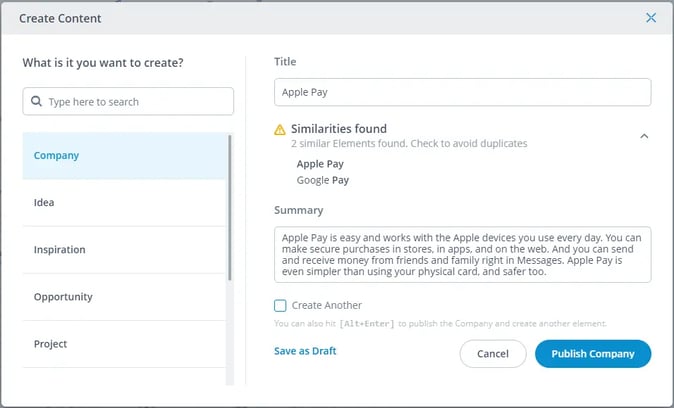
You can instantly get a wide range of information on the startup with one click.
Once you have created Elements, you will have to evaluate them to create meaningful radar visualizations.
Rate your content
To create your startup radar, you first need to rate the content you created in the first step.
- Select the startup you want to rate from the Explorer view.
- Navigate down to the section "Ratings" and use the rating sliders to assess your content.
The rating of startups in ITONICS is based on factors such as “Complementarity to Business”, “Degree of Innovation”, “Disruptive Potential”, “Funding Status”, and “Level of Awareness”.
Pro-tip: Ask your team and other experts to rate startups you’ve identified to reduce bias and get an aggregated rating. To gauge your confidence in a rating, you can see the number of users who have added a rating for each criterion.
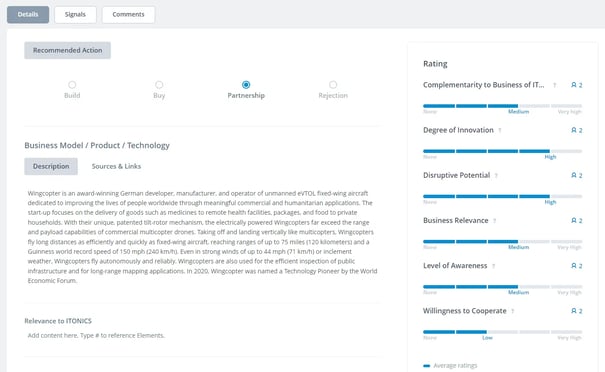
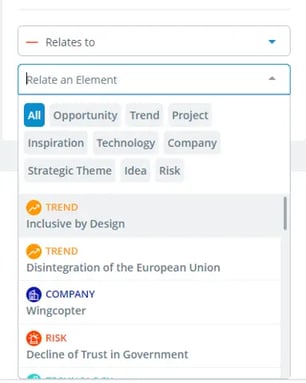
Relate to other content
In addition to the rating, you can relate the startups you have created with other content on the radar, such as trends and technologies. To view the Company Radar, select Company from the drop-down in the Element Type. From the Configuration settings, select which rating factors you want to view through the Distance and Color separation.
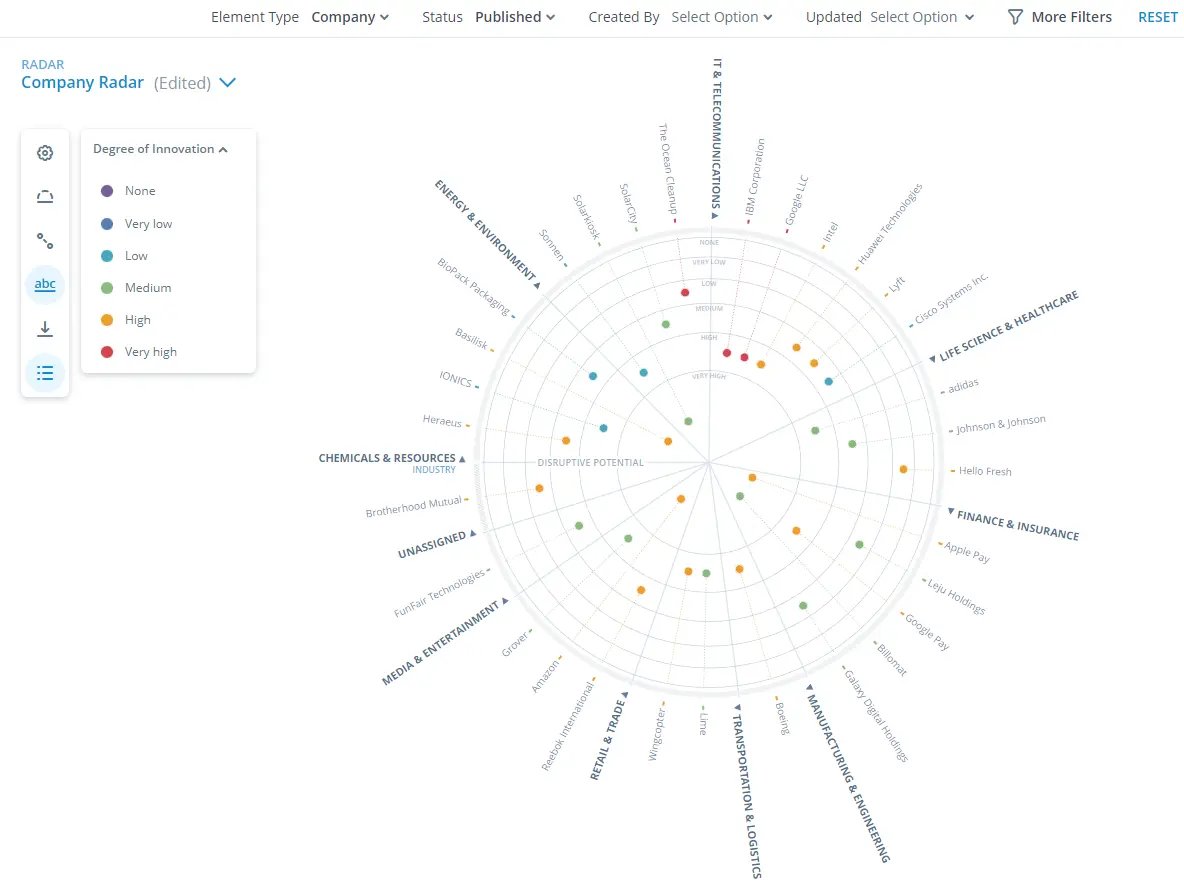
Also see: How to Create Your Trend and Technology Radar in 5 Minutes
Extend view on startups
In addition to the Radar view, you can view the information in a Company Matrix to get a different perspective from the same data. In the Matrix view below, the different startups stand in terms of Disruptive Potential (x-axis), Degree of Innovation (y-axis), and Business Relevance (color).
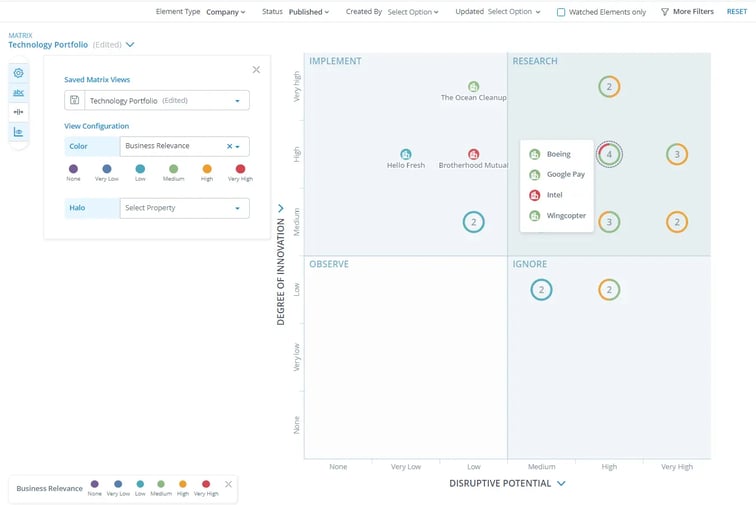
In the image, the startup Wingcopter has a high Disruptive Potential and Degree of Innovation but has a medium Business Relevancy, which can indicate that Wingcopter might not be a good collaboration partner, and business efforts should be redirected toward identifying other relevant startups.
While the Radar shows the strengths and weaknesses of its Elements, draws relations between them, and compares them based on multiple criteria, the Matrix divides the Elements into four zones - implement, research, observe, and ignore - which helps in decision-making and prioritization.
The Network Graph is another tool that helps you to assess startups based on their connection with other Elements. The tool shows connections between startups and drivers of change, including trends, technologies, risks, and ideas based on relations and shared tags. You can further select different factors in the configuration settings to separate the Elements based on Color and Size.
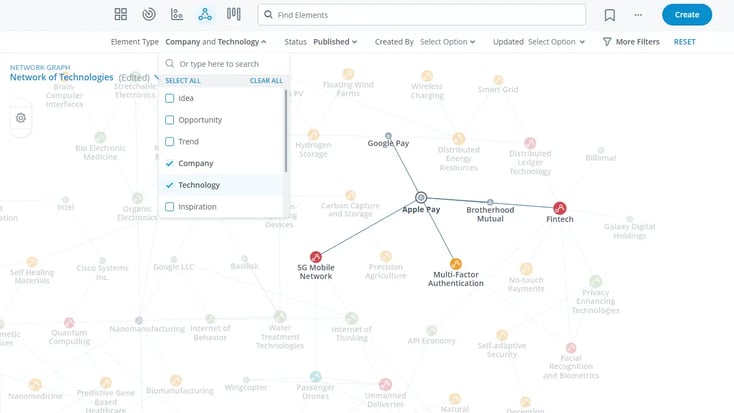
Identify relations with trends and technologies to evaluate partnership prospects
To identify potential partnerships with startups, understanding their relationships with other trends and technologies relevant to your business can be a good indicator of their fit. A startup related to trends and technologies with higher ratings can have a higher potential for partnerships.
If your organization has identified a particular trend or technology as important to its strategy, the fastest way to adopt it is to consult or partner with a startup that is related to that trend or technology. Developing products based on a new technology solely internally would require more resources and time.
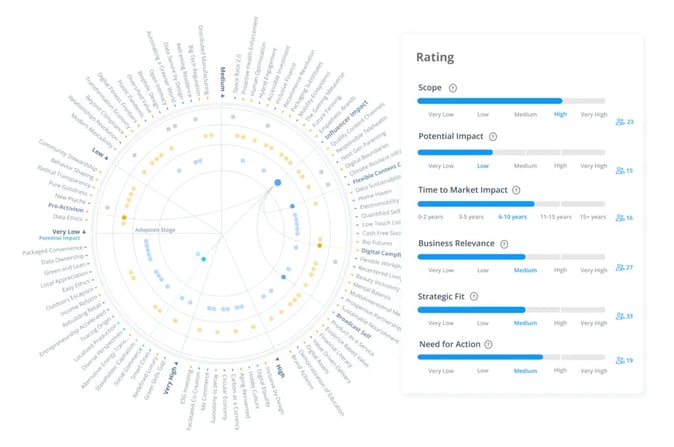 The Technology Readiness Level (TRL) is a good indicator in assessing a startup in terms of the technology it uses. TRL is an indicator of the relative maturity of technologies. A lower TRL indicates that the technology is still in its early stages of development. A higher TRL ensures that the actual technology has been successfully implemented in real situations. Partnering with a startup using a low TRL technology bears greater risk while having the benefit of being an early adopter.
The Technology Readiness Level (TRL) is a good indicator in assessing a startup in terms of the technology it uses. TRL is an indicator of the relative maturity of technologies. A lower TRL indicates that the technology is still in its early stages of development. A higher TRL ensures that the actual technology has been successfully implemented in real situations. Partnering with a startup using a low TRL technology bears greater risk while having the benefit of being an early adopter.
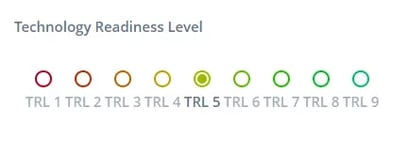
Benefits of the ITONICS Startup Radar at a glance
Using the ITONICS Startup Radar has the following advantages:
- As all the sources of information are on the same platform, this makes it easier for navigation, planning, and decision-making for innovation opportunities.
- The filtering options in the Radar provide the most important information with a few clicks.
- You can map real-life trends, technologies, and inspirations to the startups, which makes it insightful for evaluation and comparison. The state of the trends, technologies, and other mapped elements determine the feasibility of a partnership with the startup.
- Collaborative tools such as ratings and comments help to get collective intelligence in decision-making.
- With data from a collection of various sources in the same platform and the use of AI, resource-intensive research tasks can be automated and performed efficiently.
|
Best practice example: DZ Bank DZ Bank, the second-largest financial institution in Germany, kept a close eye on the fintech landscape to better understand the changes occurring in the banking industry's value chain. They utilized a Fintech Radar tool that curated information on fintech startups to gain a comprehensive overview of potential fintech partnerships. The bank strategically evaluated trends based on predefined criteria, such as customer benefit, earnings potential, and suitability for the mass market. To identify the strategic relevance of trends, technologies, and startups from both external and internal perspectives, they visualized and mapped them according to evaluation criteria in the Innovation Radar. This process led to creating a company-wide Innovation Radar that serves as a single reference source. Moreover, it helped the bank identify strategic fields of action and gaps in its innovation portfolio. A company-specific fintech module was integrated to monitor the market and existing corporate-startup partnerships. |
Identify startup partnerships with open innovation
If you want to identify startups for solving a particular problem or to find ideas for leveraging a specific technology, open innovation is a promising approach.
Open innovation involves seeking ideas and solutions from diverse external sources to drive innovation. This approach is particularly useful for companies seeking a decentralized and participatory innovation process. Open innovation fosters collaboration and problem-solving by harnessing the collective intelligence of a broad spectrum of individuals. Potential submissions from open innovation may encompass ideas related to particular challenges or opportunities, proposals from startups and partners, as well as input from customers.
ITONICS Open Innovation allows the sourcing of ideas from external audiences. The feature can be effectively used to collect solution proposals from startups. After determining whether to implement a top-down or bottom-up open innovation campaign, selecting the time frame (either always-on or time-bound), and defining the fields of information required for submissions, you can integrate a form onto your website to receive submissions from startups.
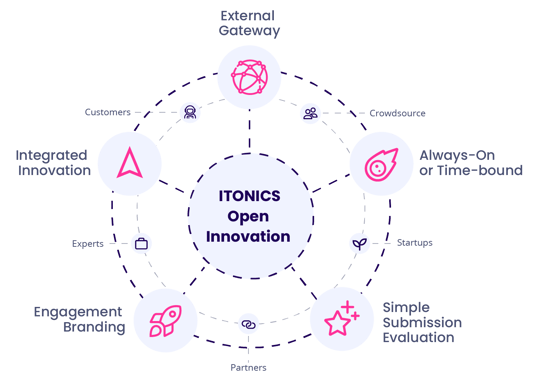
To simplify the process of receiving targeted proposals from startups for specific search fields, it is recommended to define a clear set of focus areas that align with your organization's innovation needs and challenges. ITONICS' External Gateway feature is specifically designed to leverage external knowledge and expertise for idea submissions, making it easy to collect proposals from beyond the ITONICS ecosystem using an external form.
The External Gateway can be easily integrated into other web pages, including your company's homepage, and can be customized using HTML, CSS, and inline Javascript to match your corporate design. All submissions are gathered in one digital platform, facilitating the creation of a startup ecosystem.
Additionally, ITONICS' Crunchbase and Tracxn integration can be utilized to instantly create and enhance startup profiles. This integration also enables the active management of startup portfolios and faster identification of opportunities.
Once external submissions are received, you can evaluate the ideas collectively using inbuilt features and pass them through a series of stages in the selection process. Submissions are best evaluated by including other teams or experts who like, comment, and rate ideas.
Also see: How to Use Open Innovation for Startup Scouting
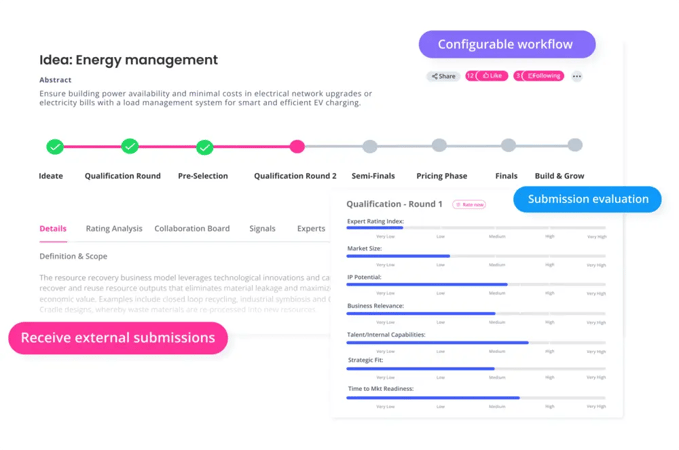
|
Best practice example: Bosch Using open innovation, the German engineering and technology company Bosch has launched the Bosch Open Innovation Partnerships platform that allows the company to co-create with startups, universities, and other external experts.
|
From scouting to project execution
Ready to radically upgrade your processes and capabilities? The ITONICS Innovation OS is designed to systemize all activities from strategy to execution, at scale. Our innovation management software has tons of features to streamline your efforts, including:
- Real-time signals feed from patents, news, scientific publications, and reports to stay on top of market developments
- Collaboratively rate startups and other drivers of change with your teams and experts
- Customizable Radar views to understand the potential impact of drivers of change at a glance
- Customizable ideation campaign templates to get started quickly
- Capture, evaluate, and prioritize ideas from internal and external sources
- Manage innovation projects, portfolios, and roadmaps
- Monitor and track project progress and performance
- Reports on innovation metrics and KPIs
Don't leave your organization's innovation success up to chance (or spreadsheets). Focus on what really matters: driving growth for your business. Get started with a free demo today.

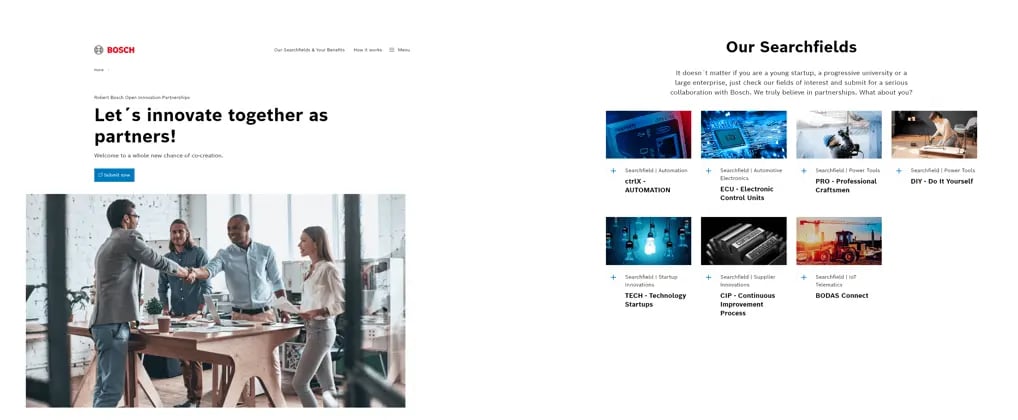



/venture-clienting-for-dual-use-startups-guidelines-full.webp??&width=900&height=450&name=venture-clienting-for-dual-use-startups-guidelines-full.webp)